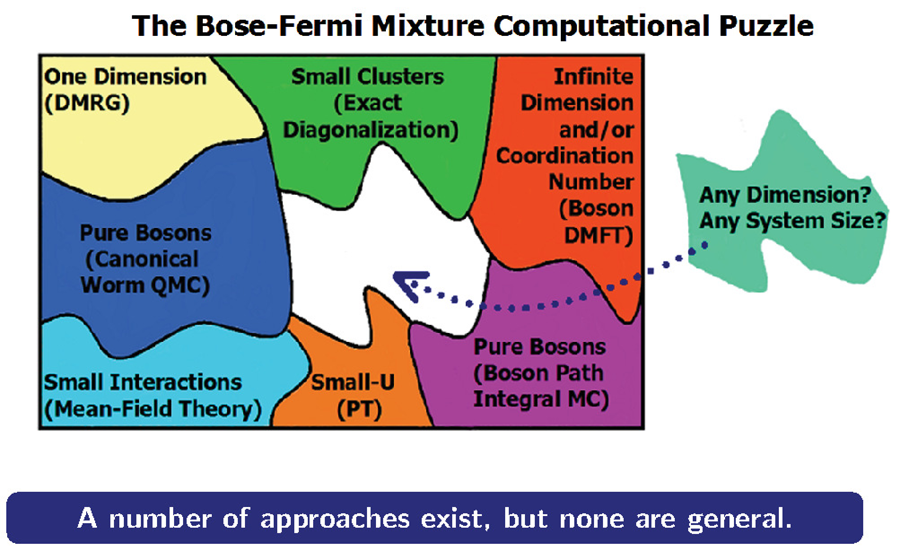 |
Whenever a reliable, first-principles understanding of a many-body quantum mechanical problem
is required, Monte Carlo methods are needed. Indeed, putting aside uncontrolled approximations
based on mean-field or perturbative approaches, numerical methods are the most dependable
tools, and in the quantum many-body problem this means using quantum Monte Carlo (QMC)
techniques, if exact answers are required. For these reasons, QMC has been in use for decades
in a variety of fields, ranging from quantum chemistry to atomic, condensed matter and nuclear
physics, as well as in Lattice QCD.
Gathering experts from all those areas, the INT program "Advances in quantum Monte Carlo
techniques for non-relativistic many-body systems" aimed to understand the level of progress that
has been reached in recent years. In particular, the program addressed the definition of a standard
problem to gauge the efficiency and efficacy of the large number of flavors of QMC that exist in
the literature. This includes lattice (with and without improved actions) as well as continuum
formulations; zero and finite temperature; and strategies to deal with the infamous sign problem.
Participants (over 50 of them) attended talks in the morning, followed by dynamic discussion
sessions in the afternoon. The variety of areas involved provided remarkable points of contact to
compare and contrast the use of the algorithms and machines, as well the challenges faced by each
field. Among the participants there were experts in the various areas at all levels, including junior
faculty, postdocs and graduate students. This allowed the participants to have an exceptional
perspective on what is known to work, what has been tried in the past, what challenges remain
unaddressed, and what new out-of-the-ordinary ideas are being tested.
In addition to the latest technical advances, a number of talks focused on the latest applications,
such as QMC for the chiral effective field theory of nuclear interactions, or quantum gases in
optical lattices.
This program contributed to enhance among the participants the sense of a "quantum Monte Carlo
community" that operates over a wide range of different sub-fields in physics, but that can make
use of the common technical language to promote cross-fertilization both in terms of advancing
the algorithms, and of better understanding phenomenological aspects by looking at them from
different perspectives. Most participants expressed the need of repeating similar experiences in
the next years.
The friendly and supportive environment provided by INT helped the researchers to establish a
number of new connections and new projects that will contribute to further strengthen the use ad
applications of Quantum Monte Carlo methods across physics and chemistry in the near future

|

